Expedition 58
/Began Dec. 20, 2018; transitioned to Expedition 59 on March 15, 2019
Transferred from Expedition 57
Oleg Kononenko, Roscosmos
| Commander
Anne McClain, NASA
| Flight Engineer
David Saint-Jacques, CSA
| Flight Engineer
Launched: Dec. 3, 2018, aboard Soyuz MS-11
Landed: June 25, 2019
— Statistics —
Max. crew size: 3
Started: Dec. 20, 2018
Ended: March 15, 2019
Duration: 84 days
Orbits of Earth: ~1,300
Launch site: Baikonur Cosmodrome, Kazakhstan
Spacecraft: Soyuz MS-11
Spacewalks: 0
Total spacewalk time: 0 minutes
Visiting vehicle arrivals: 1
Visiting vehicle departures: 3
— Mission Summary —
Expedition 58 continued to support the many dozens of ongoing experiments at the International Space Station. The crew consisted of Russian cosmonaut Oleg Kononenko, NASA astronaut Anne McClain and Canadian Space Agency astronaut David Saint-Jacques.
— Major Events —
Expedition 58 begins
At 1:40 UTC Dec. 20, 2018, Soyuz MS-09 undocked with Russian cosmonaut Sergey Prokopyev, NASA astronaut Serena Aunon-Chancellor and European Space Agency astronaut Alexander Gerst. They left behind Russian cosmonaut Oleg Kononenko, NASA astronaut Anne McClain and Canadian Space Agency astronaut David Saint-Jacques to form Expedition 58.
Gerst, who was commander of Expedition 57, handed over command of the space station to Kononenko on Dec. 18. Expedition 58 is expected to only have three crew members and will conclude and transition to Expedition 59 when Soyuz MS-12 launches and docks with the outpost in March 2019.
CRS-16 Dragon departure
After spending just over a month attached to the International Space Station, SpaceX's CRS-16 Dragon spacecraft departed the outpost and returned to Earth.
Loaded with more than 1,800 kilograms of equipment and experiments for a return to Earth, Dragon was unberthed from the Harmony module at around 20:00 UTC Jan. 13, 2019. Several hours later, after it was maneuvered via the robotic Canadarm2 to a spot some 10 meters below the Destiny module, NASA astronaut and Expedition 58 Flight Engineer Anne McClain commanded the arm to release the vehicle.
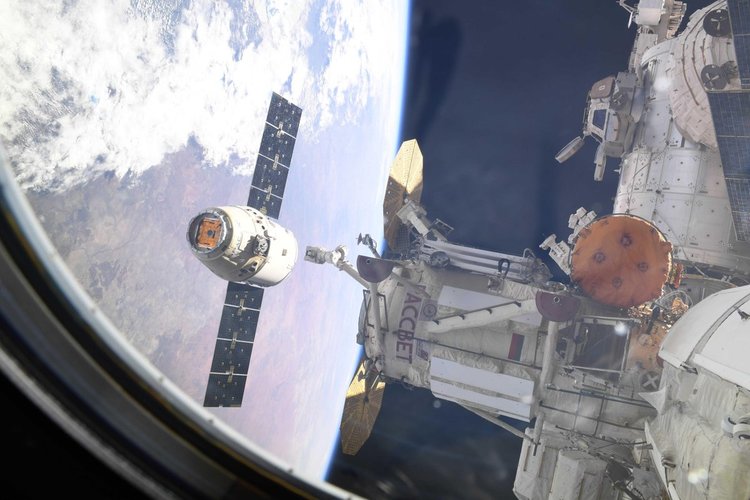

The official release time was 23:33 UTC. Once the arm backed away from Dragon, three departure burns of the course of about 10 minutes were performed to push the spacecraft safely away from the space station.
It was initially planned for Dragon to leave the outpost on Jan. 10. However, inclement weather at the splashdown site in the Pacific Ocean warranted a delay.
Following its departure, the CRS-16 Dragon continued to orbit Earth several more times before it was commanded to perform a deorbit burn at about 04:20 UTC Jan. 14. Using its Draco thrusters for about seven minutes, the spacecraft slowed itself down enough to dip into the thicker part of Earth’s atmosphere.
After the deorbit burn, the trunk section of Dragon separated from the capsule. Only the capsule with its protective heat shield is designed to survive re-entry.
After re-entry, a series of parachutes deployed, culminating in three main chutes, to slow the Dragon capsule down for a soft splashdown in the Pacific Ocean just off the coast of Baja California.
Progress MS-09 departure
Progress MS-09 departed from the International Space Station after spending spending more than six months at the outpost.
The cargo freighter autonomously undocked from the Pirs docking compartment at 12:55 UTC Jan. 25, 2019. Following its departure, it spent several hours moving away from the space station before performing a deorbit burn at about 16:08 UTC. Once it entered the atmosphere over the Pacific Ocean, it burned up with unneeded equipment and trash.
NG-10 Cygnus departure
Northrop Grumman’s NG-10 Cygnus spacecraft departed the International Space Station after three months at the orbiting complex.
Loaded inside the disposable cargo freighter was 2,500 kilograms of trash and unneeded equipment. Cygnus then performed a two-week free-flight mission to deploy several CubeSats, according to NASA.
Using Canadarm2, ground controllers unberthed Cygnus from the Earth-facing port of the Unity module in the early-morning hours of Feb. 8, 2019. It was released from the outpost several hours later by NASA astronaut and Expedition 58 Flight Engineer Anne McClain at 16:16 UTC.
Following the completion of its secondary mission, Cygnus performed a deorbit burn on Feb. 25, where it will broke apart in the atmosphere over the southern Pacific Ocean.
Crew Dragon Demo-1 starts the Commercial Crew era
For the first time since the end of the Space Shuttle program, a U.S. spacecraft designed to fly humans docked with the International Space Station.
At 10:51 UTC March 3, SpaceX’s unpiloted Crew Dragon Demo-1 spacecraft made contact with the docking adapter at the forward end of the International Space Station. This came some 27 hours after launching atop a Falcon 9 from Kennedy Space Center’s Launch Complex 39A in Florida.
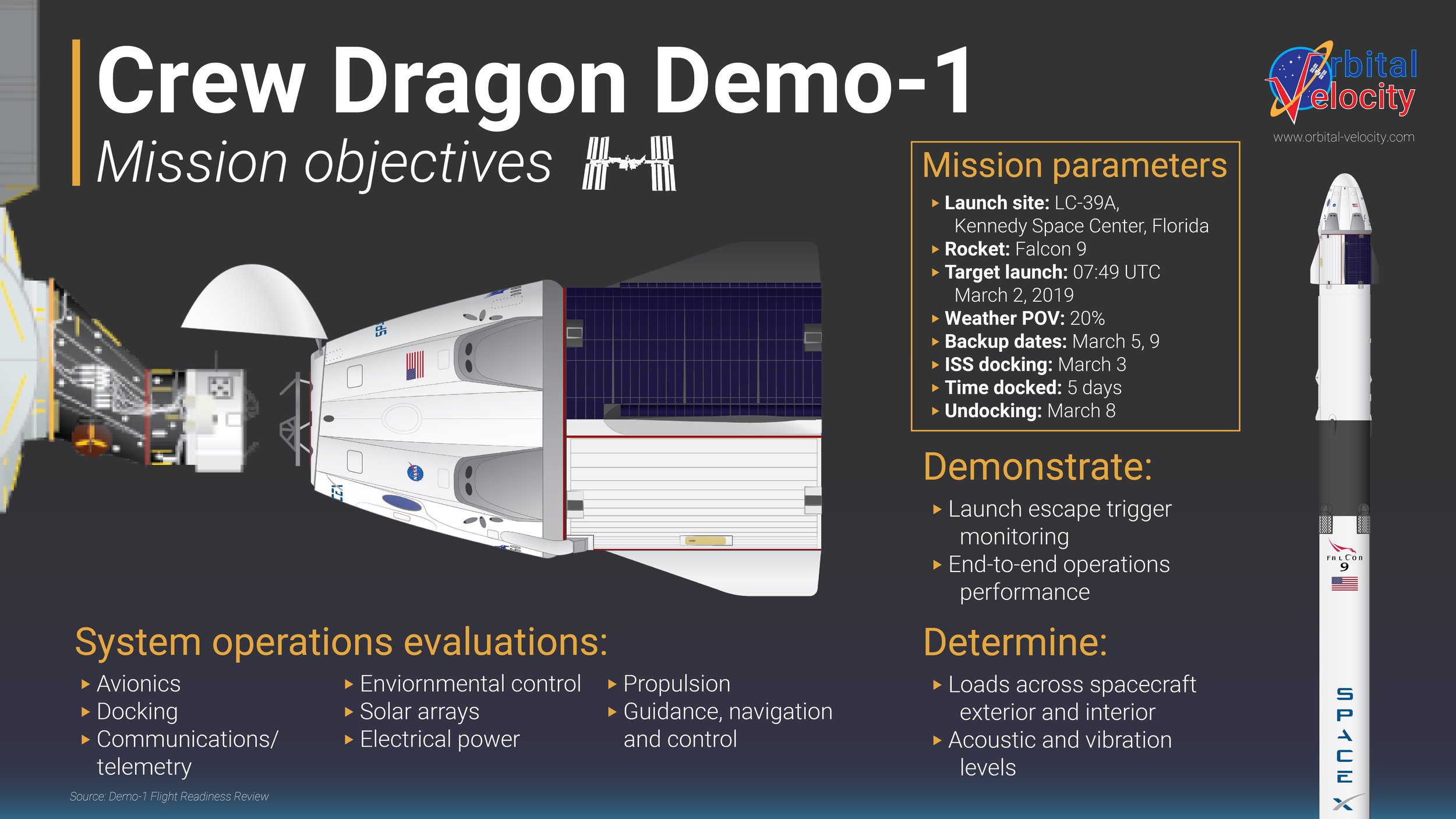
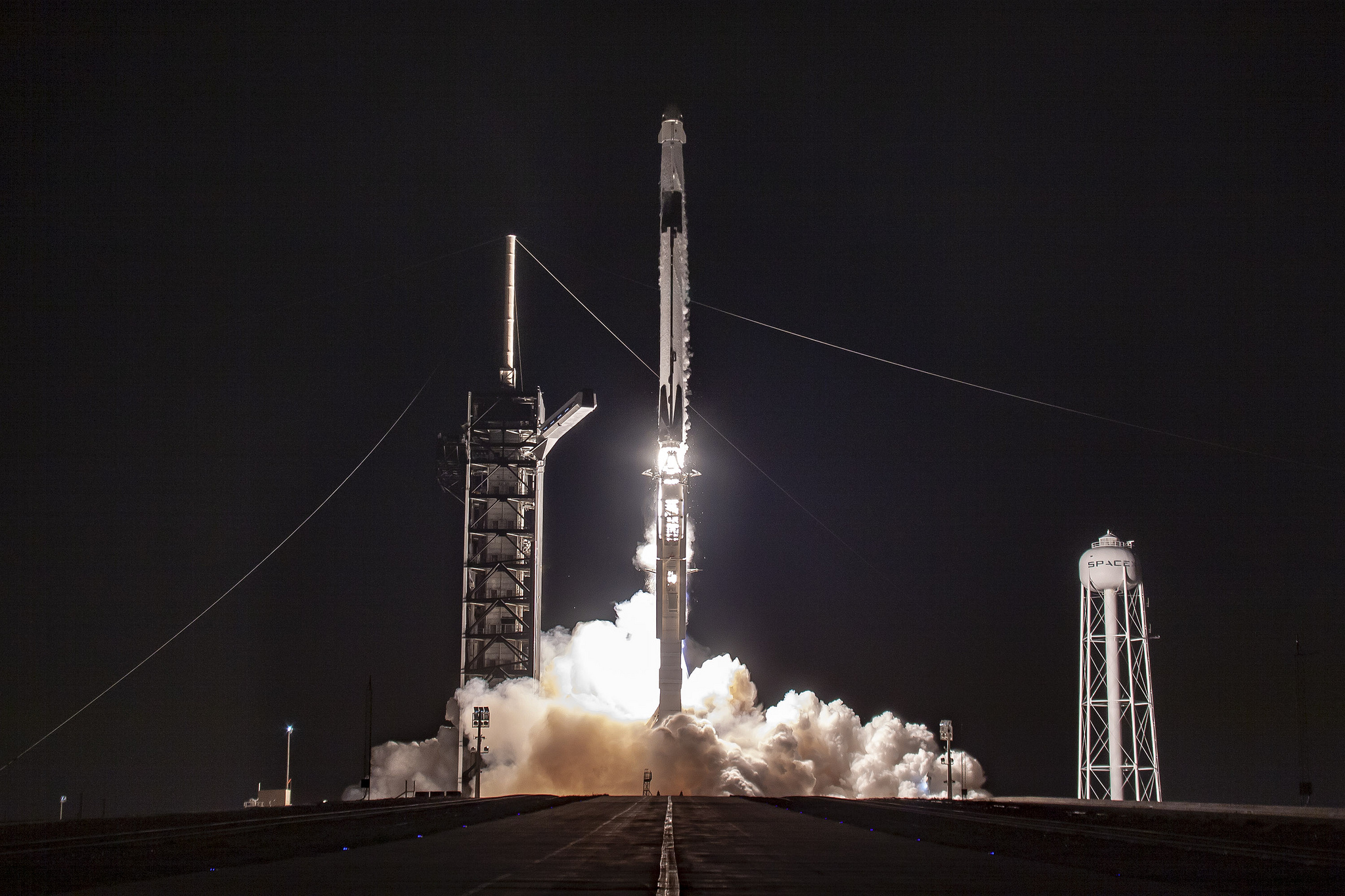


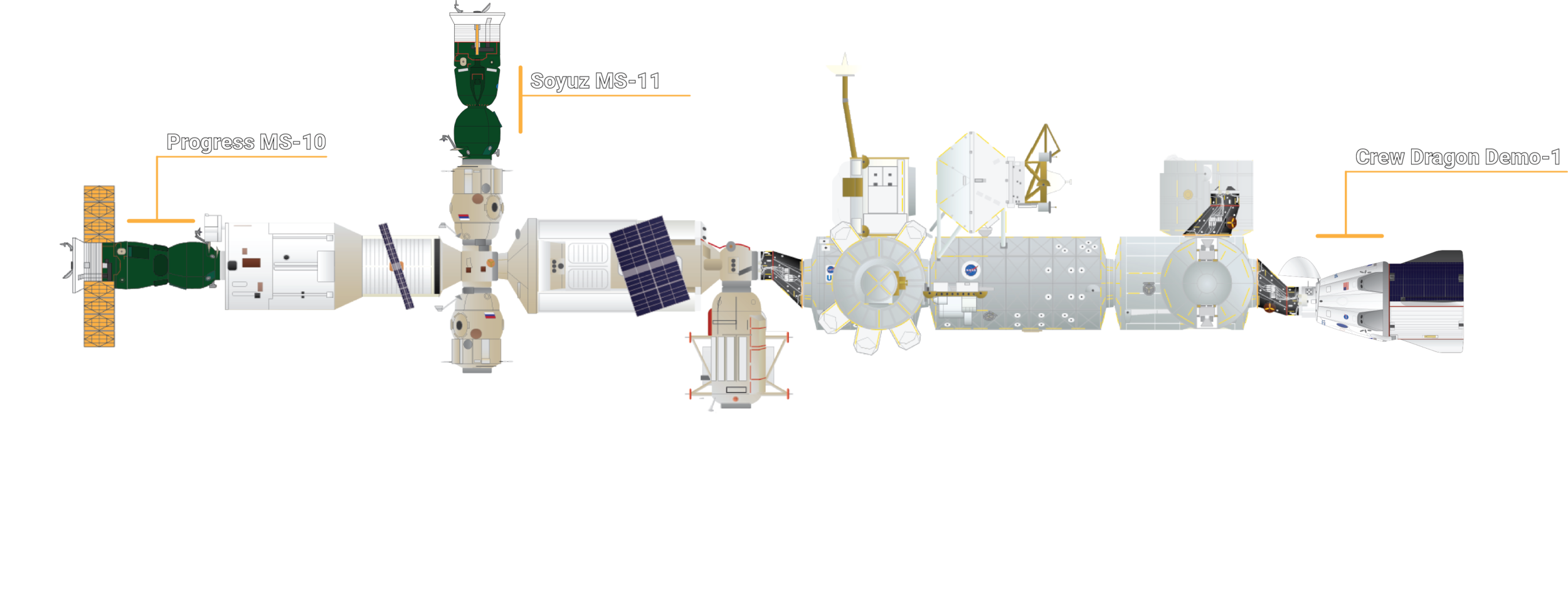
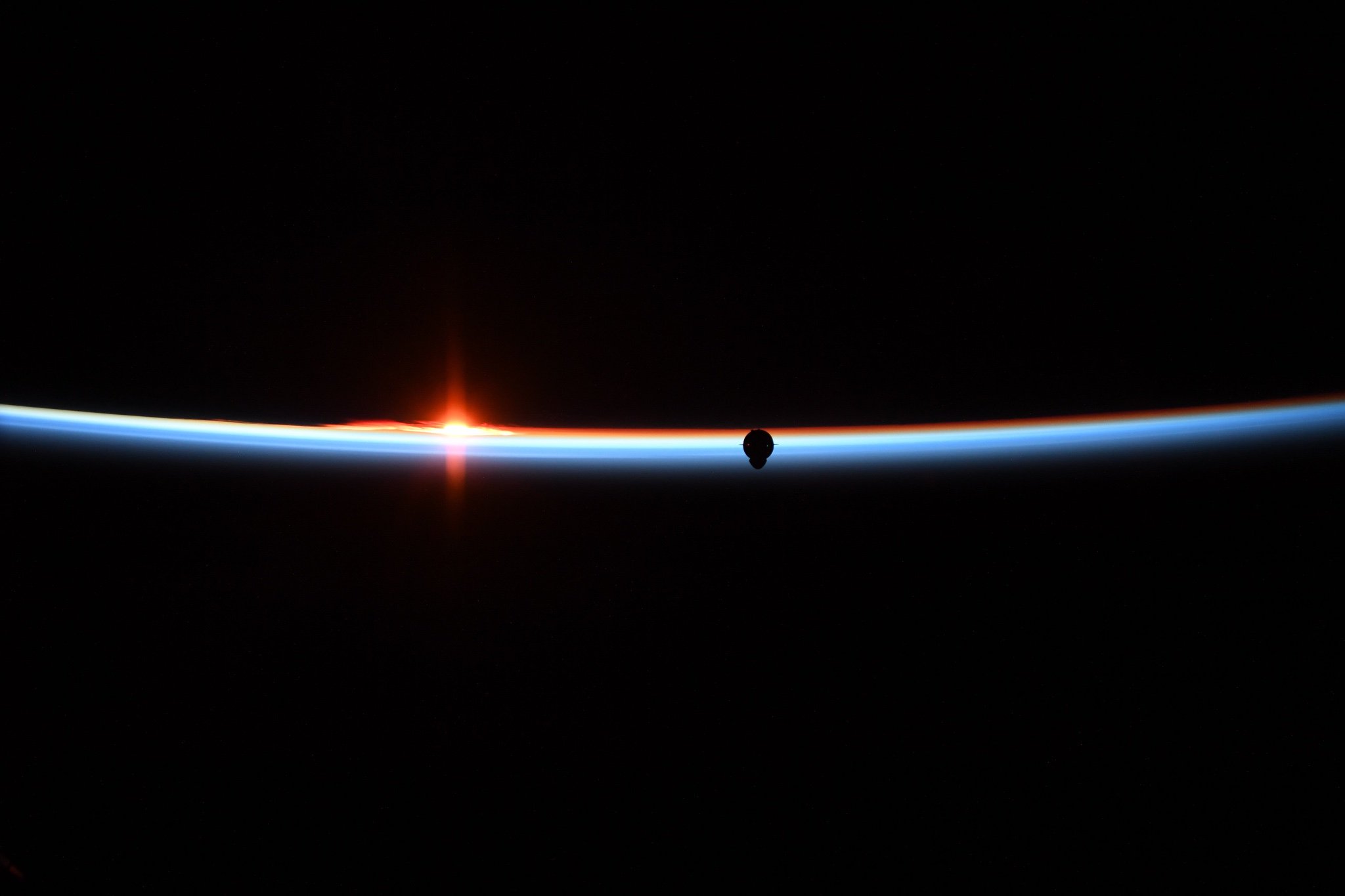
Following a “soft capture,” the docking ring on Crew Dragon was retracted, pulling the spacecraft the last several centimeters toward the ISS to make a firm link. It was the first SpaceX spacecraft to perform an autonomous docking as the first-generation cargo Dragon vehicles are designed to get close to the outpost for astronauts to use a robotic arm to “grab” and berth the spacecraft.
Over the next several hours, the space station’s Expedition 58 crew worked to pressurize the small space between the spacecraft and station’s hatches before opening them to enter the vehicle for the first time. That hatch opening occurred at 13:07 UTC.
“Our sincere congratulations to all Earthlings who have enabled the opening of this next chapter in space exploration,” McClain said during a welcoming ceremony. “Congratulations to the teams at SpaceX and Boeing who have been working diligently to define what this new era of commercial spaceflight will look like.”
After spending five days at the outpost, it was time for the spacecraft to return to Earth. The unpiloted Crew Dragon autonomously undocked at 07:32 UTC March 8, 2019, and began moving to a safe distance. The spacecraft left the vicinity of the outpost about 20 minutes later.
“From Houston, we would like to congratulate the amazing teams from around the world who comprise of international partnerships and a great team at SpaceX for bringing Crew Dragon to the International Space Station,” spacecraft communicator Leslie Ringo radioed from Mission Control in Houston to the outpost. “We wish this new asset to human spaceflight fair winds and following seas as it returns to Earth for its splashdown in the Atlantic. You have all made us proud today.”


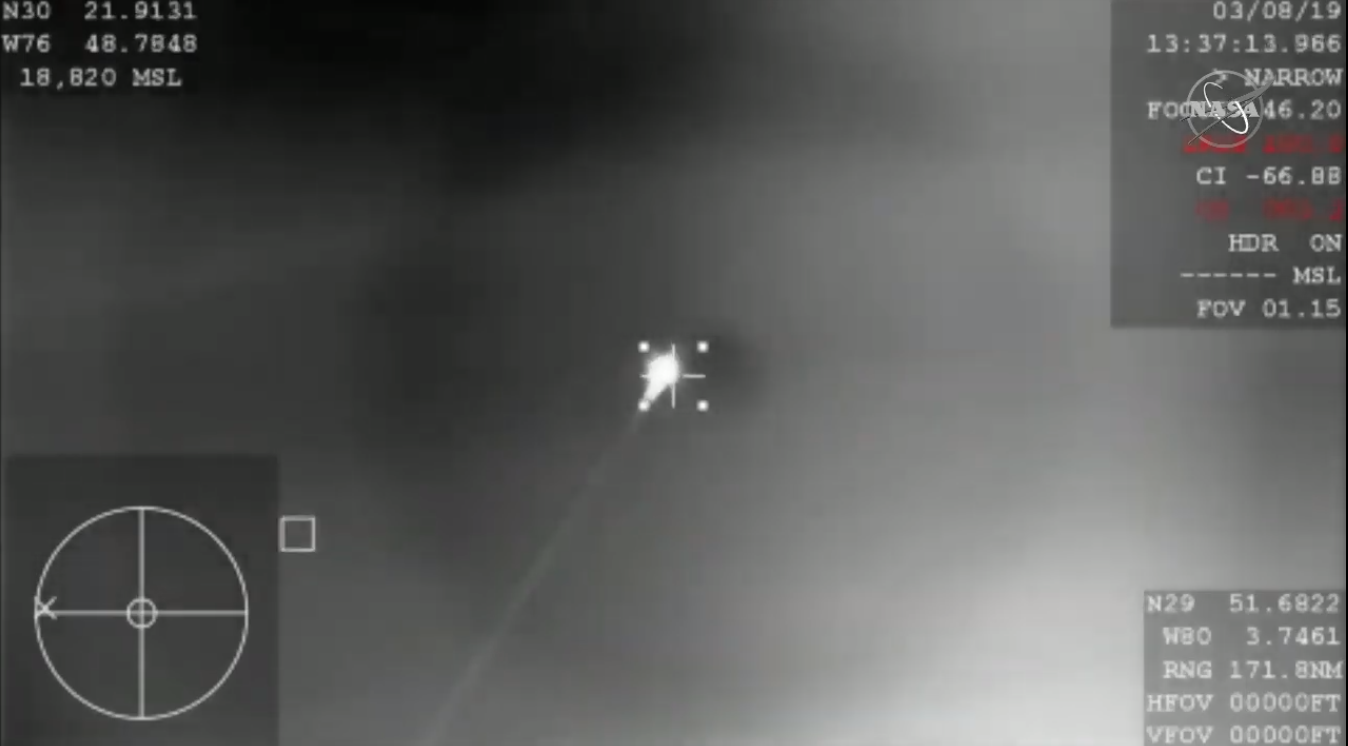
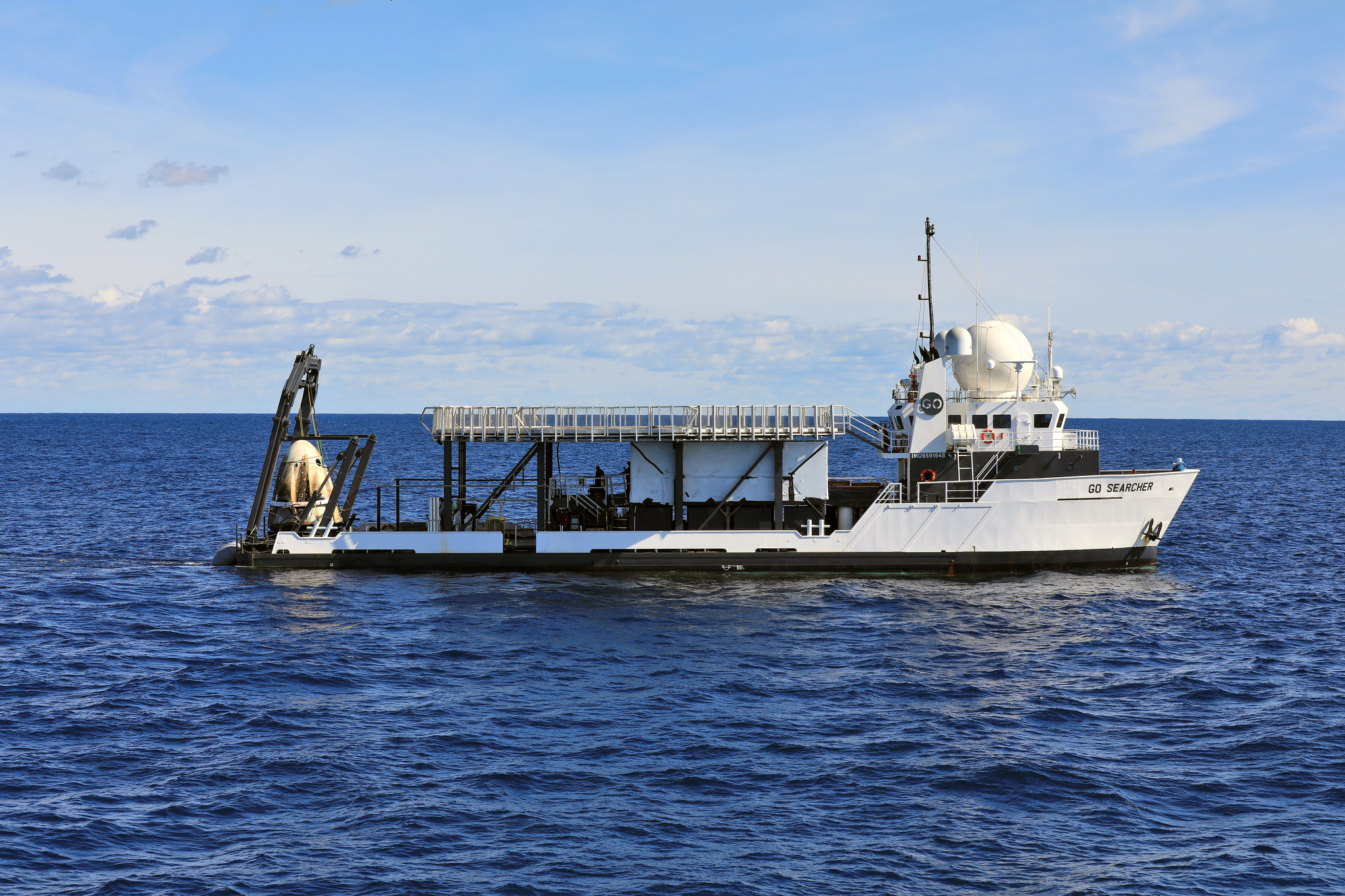
Several orbits later, Crew Dragon was set to perform its deorbit burn. First, the trunk separated at about 12:48 UTC. This was followed by a roughly 15-minute burn using the spacecraft’s Draco thrusters to drop the vehicle out of orbit.
After that, the nose cone, which protects the docking adapter and guidance equipment during launch, was retracted and closed for re-entry.
Entry interface occurred at 13:33 UTC while the capsule, protected by its PICA-X heat shield, was flying about 100 kilometers over the Midwestern United States on a descending node across the continent.
About 8 minutes later, the spacecraft had slowed down enough and was low enough in the atmosphere for a series of parachutes to open, culminating in four main chutes. This allowed the capsule to gently descend toward a staging area in the Atlantic Ocean off the coast of Florida and Georgia. Splashdown took place at 13:45 UTC.
This was the first time a spacecraft intended for humans had splashed down in the Atlantic Ocean since Apollo 9 on March 13, 1969.
The next step was for the SpaceX recovery teams to retrieve the spacecraft and place it on a recovery ship to be brought back to Port Canaveral, Florida. There, its cargo was offloaded and the spacecraft began undergoing a long inspection process for refurbishment to be readied for its next mission as the capsule to be used for an in-flight abort test in the coming months.
SpaceX and NASA will analyze data for both the Demo-1 mission and the in-flight abort to ensure everything will be safe for humans when the spacecraft is officially certified for people. Only then will the Demo-2 mission fly with NASA astronauts Doug Hurley and Bob Behnken, likely sometime in summer or fall 2019.



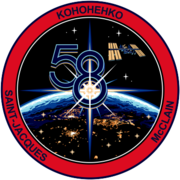
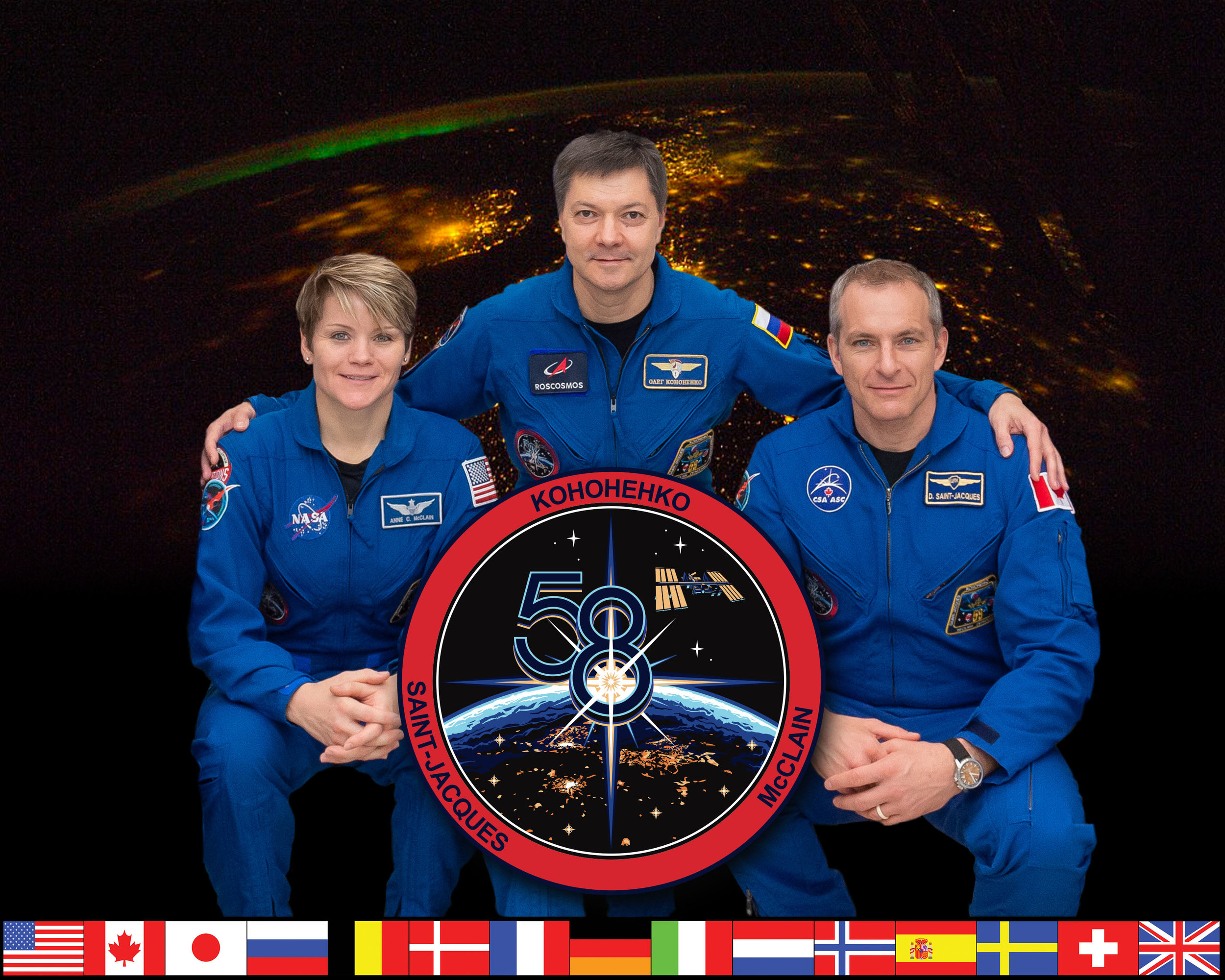















The historic Crew Dragon Demo-1 mission has come to a conclusion with a successful splashdown in the Atlantic Ocean not far from where its mission began six days ago.
Following a five-day mission attached to the International Space Station, the unpiloted Crew Dragon autonomously undocked at 07:32 UTC March 8, 2019, and began moving to a safe distance. The spacecraft left the vicinity of the outpost about 20 minutes later.